Barbara Byrd of Triangle Arts Association
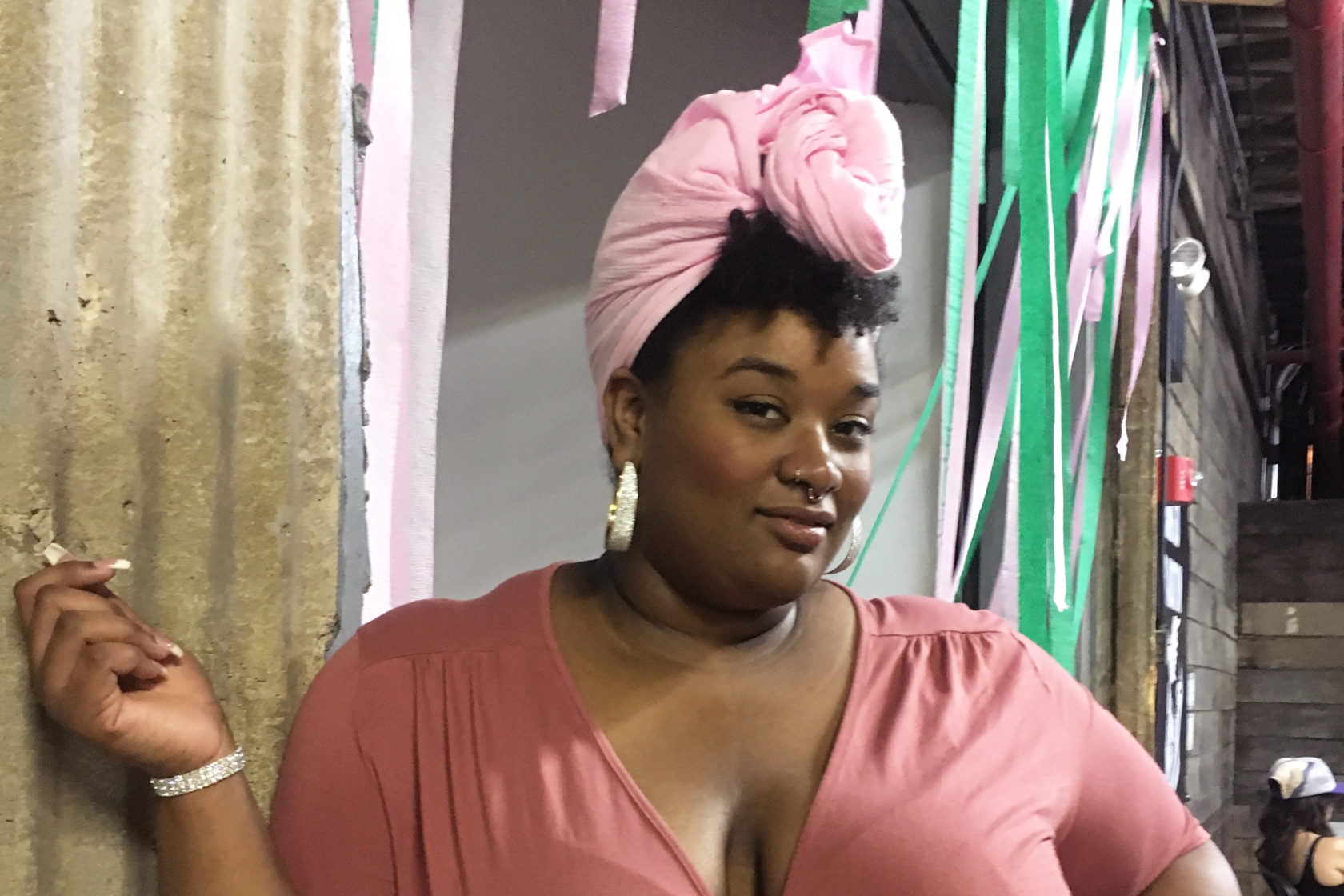
In Learning from Experts, we tap into our network of artists and thinkers who work within the world of art and culture. For this edition, Dana Golan interviewed Brooklyn-based Artist and Program Manager, Barbara Byrd, about her thoughts on the future of institutions and the effects of the global COVID-19 pandemic. We talk about art accessibility for different communities, the reality of money systems in the art world, and what the future holds for an art residency like Triangle Arts, which Barbara manages along with her colleague Nova Benway.
DG: Can you talk a little bit about what you do at Triangle Arts? How is this organization different from other art institutions?
BB: Triangle Arts is a nonprofit artist residency program. It was started in 1982 by a group of artists in, what they originally called, a workshop. The artists would go to upstate New York, live on a farm, and make work in the barn for two weeks. Fast forward to today: we are a residency program and have four to five artists in residence at a time.
From my understanding, other art residency programs come with professional expectations from their artists: like a show at a gallery at the end of their residency, which is great in many ways. We are different in that we don’t have that expectation at Triangle Arts. We really push for community between our artists and focus on how we can help them get to the next stage, through curating and peer to peer studio visits. We want them to take advantage of all of the people coming through the space but, also, give them flexibility in what they want to make out of it. If they want to curate a show, that’s great! For example, we had a resident, Annesofie Sandal, curate a show with women who are artists and mothers. She was not in the show herself but was interested in curating and creating this program.
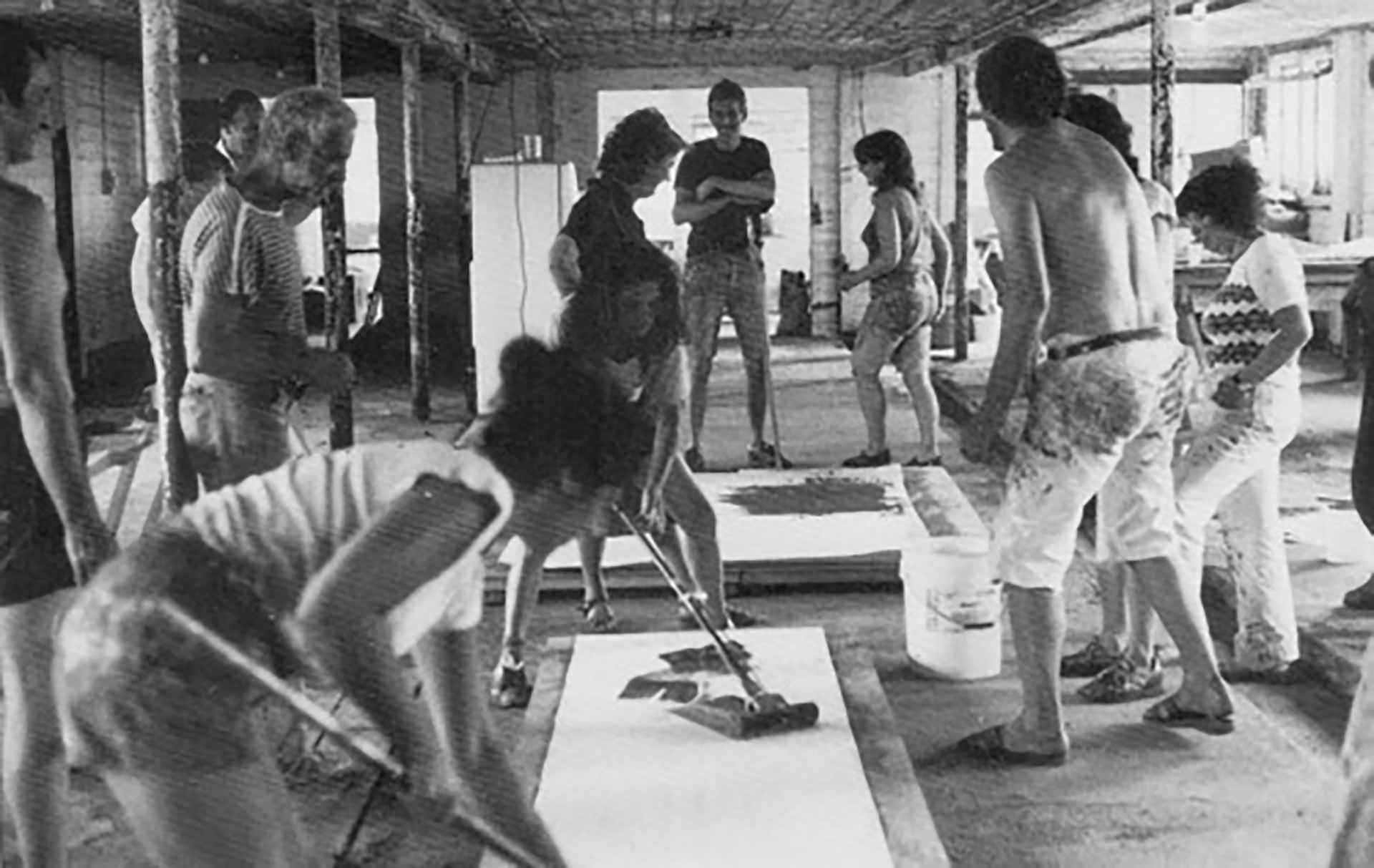 The original artist workshops in 1982, courtesy of Triangle Arts
The original artist workshops in 1982, courtesy of Triangle Arts
DG: Have you and your colleagues had conversations about what Triangle Arts will look like for the foreseeable future, considering the effects of COVID-19? Especially ways of supporting artists through this time?
BB: Yes, it’s just me and my director, Nova Benway, here at Triangle Arts. We’ve been in conversation about how things are going to transform. The immediate impact relates to our residents. We currently have five residents and four of them are international, so all of them have left. It’s very tense here, and they can’t be here with the combination of the virus, and complications of being international, and trying to get home. We can only help one artist in residence right now, but she happens to be quarantined currently.
We are focusing on the back-end of Triangle Arts, right now, and doing more office work to try to find resources from other residencies and institutions. We are looking into the future of our organization, financially. We’re also trying to stay in contact with the previous artists in residence—our alumni. To support them through this time, we are utilizing our social media to highlight their work. Every Thursday, we post about either an alumni show that got shut down or their work. We’re also doing self-care Fridays to help people relieve their stress.
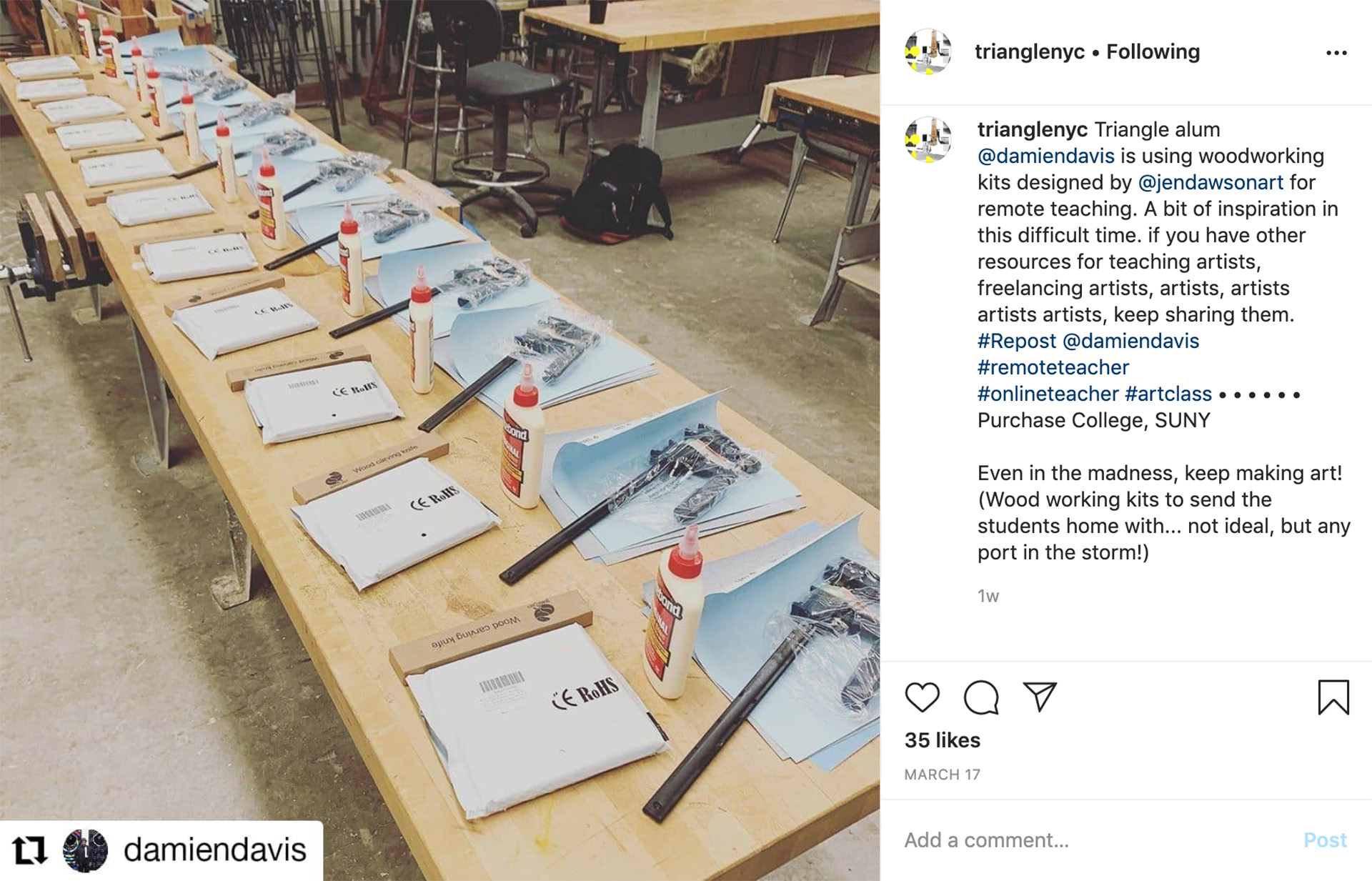 Weekly Thursday post to support Triangle Art’s Alumni, courtesy of Triangle Arts
Weekly Thursday post to support Triangle Art’s Alumni, courtesy of Triangle Arts
DG: Many art and cultural institutions are thinking of ways to virtualize their organizations as a result of COVID-19. How do you think this could change the overall art experience?
Virtualizing organizations can open up doors for previous audiences that have been ignored or neglected by art institutions in the past, like people with disabilities or people with low income who don’t have the luxury of going to museums. It also pushes us to recognize that art can become anything and transcend anything. That is what is most exciting for me. Our art experiences can become something that revolutionizes the way older traditional institutions function.
I think the internet has a lot of power, especially now. There are people who are doing work like releasing PDFs of expensive books that cost thousands of dollars and people who are using social media as a resource. So, I think the fact that museums and other institutions are being forced to go online is exposing these resources to many people who weren’t able to physically visit these institutions prior. I think, as a result, this will raise a lot of questions about representation in the art world. Institutions will have to think about how people are learning about art and face questions like: who are the kinds of artists they represent and why aren’t we seeing more of x, y, and z artists?
DG: Will it still be important to have physical spaces for art and culture in the future?
BB: I do think having physical space is important for the future of art. Experiencing art in person is important. There is a physicality that you get when you see something in real life. There’s a difference between looking at a video in your room versus a curated exhibit. But, with that being said, I do think there is a shift toward curating digital spaces as well right now. I think this transition toward curated digital spaces is really important to people with disabilities and people who can’t afford, or haven’t been exposed to, museums—people who experience an invisible institutional barrier when it comes to art spaces.
It’s an issue of capitalism, of keeping bigger powers at play, and looking at art as an investment.
DG: What do you hope cultural institutions will look like 10 years from now?
BB: I hope to see the deep divestment of problematic money and the valuing of cultural institutions in all aspects of our lives. Because of COVID-19, our understanding of money systems, and the issues within them, are really coming to the forefront. I think by proxy the outlook has always been related to this issue. It’s an issue of capitalism, of keeping bigger powers at play, and looking at art as an investment. Now, the art world is being forced to look at where that money is coming from and how it is being used to silence certain voices. I’m hoping in 10 years we can move away from that.
In 10 years, I also hope that art will be reintroduced to public schools, especially in low income neighborhoods. They currently either (a) lack the resources to do that or (b) decide not to do it at all. Our governments at federal and state level always cut the arts first, which is a huge mistake. Because of that, it’s the responsibility of institutions to provide these spaces for these communities.
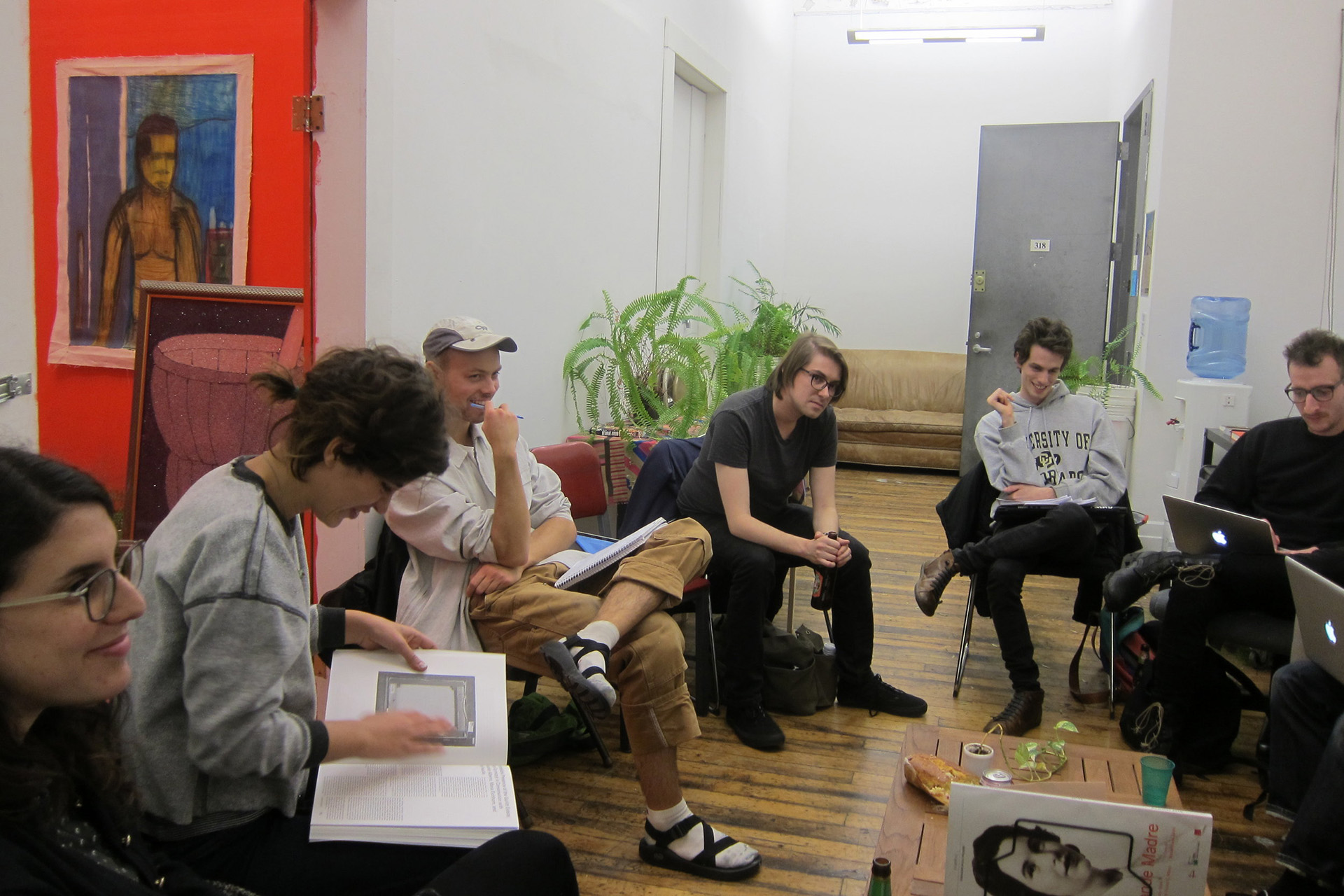 Artists in Residence at Triangle Arts, courtesy of Triangle Arts
Artists in Residence at Triangle Arts, courtesy of Triangle Arts
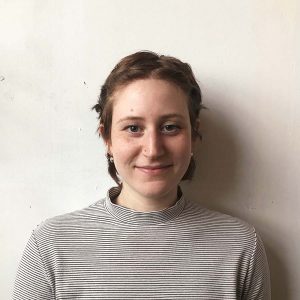
Dana comes from a background of graphic design and photography. A graduate of the University of Washington with a degree in Graphic Design and a minor in Comparative History of Ideas grew her interest in art history and cultural institutions. She has worked in communications with various nonprofits and photography agencies and is pursuing her own photographic practice.

